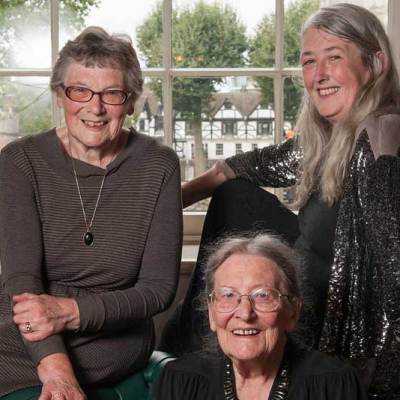‘How delightful it would be for Ireland,’ wrote Lady Georgiana Chatterton in her Rambles In The South Of Ireland During The Year 1838, ‘if many more of its young Peers followed Lord Berehaven’s example, and brought back with them from the foreign lands which they visited choice works of art and taste to enrich their own!’
Richard White, Viscount Berehaven and subsequently second Earl of Bantry, was an inveterate traveller and collector. For decades from the early 1820s onwards he criss-crossed Europe accumulating countless items of furniture, paintings, tapestries and objets d’art with which to embellish his family home, Bantry House, County Cork, which had to be greatly extended to hold these acquisitions.
The rooms were crammed with outstanding examples of Spanish leather and brasswork, 18th-century French tapestries, Italian paintings and much more besides. Lord Berehaven’s taste seems to have inclined to the more-is-more principle and his preference was to heap one item on another so that the eventual effect must have been overwhelming, not least because many ceilings were covered in either tapestries or canvases.
Eight paintings by the Guardi brothers, for example, inspired by episodes in Torquato Tasso’s poem La Gerusalemme Liberata hovered overhead in the house’s dining room. Meanwhile the walls of two adjoining drawing rooms were smothered in choice works from the workshops of Gobelins, Beauvais and Aubusson. One Gobelins panel was said to have hung in Versailles and a rose-coloured set of Aubusson to have been made by order of Louis XV for Marie Antoinette on her marriage to the Dauphin of France. Two other panels formed part of the Royal Garde-Meuble of the Tuileries. A series of photographs, probably dating from around the beginning of the last century, provide a sense of the interiors as the second Earl had left them.
The contents of Bantry House were once described as being ‘the Wallace Collection of Ireland.’ Regrettably since then the property has not enjoyed the same good fortune as the London institution. Over the past hundred years successive owners of Bantry have been forced to dispose of assets in order to keep a roof overhead. Bit by bit a remarkable accumulation has been dispersed, most of it leaving the country; the Guardi canvases, a particular grievous loss, went in the 1950s after which the hitherto intact series was broken up among various institutions in Europe and the United States.
Earlier this summer it was announced the last of the Earl’s collection, the remaining tapestries, paintings and objets d’art, were to be sold in October by Edinburgh-based auctioneers Lyon & Turnbull. Ireland has weak legislation protecting the art treasures of its remaining country houses, and indeed no register of what those treasures might be. Hence many items which could and should enhance the national patrimony can slip away without any awareness of their loss.
The highly-publicised Bantry House sale, however, has touched a nerve, not least because this part of the country, which is heavily dependent on tourism, risks being deprived of a valuable attraction for visitors. Furthermore sections of the populace appear to be experiencing a belated but burgeoning awareness – of the kind widespread and long-established in Britain – that everyone is diminished when major works of art leave the state.
Late last week it was announced the Bantry sale had been postponed, ostensibly because Lyon & Turnbull did not possess the relevant licence to hold such an event. Although nothing has been said officially, it appears that behind the scenes efforts are being made to find some way of keeping the house’s last contents in situ, perhaps by the government-funded Crawford Gallery in Cork buying the items and then ‘lending’ them back to the former owners.
Nothing is certain and the sale may yet go ahead. What is unquestionable is that this episode has demonstrated once again how Ireland continues to pay scant attention to its cultural resources, and suffers accordingly.
Lead image: used under Creative Commons licence (CC BY-SA 3.0)



